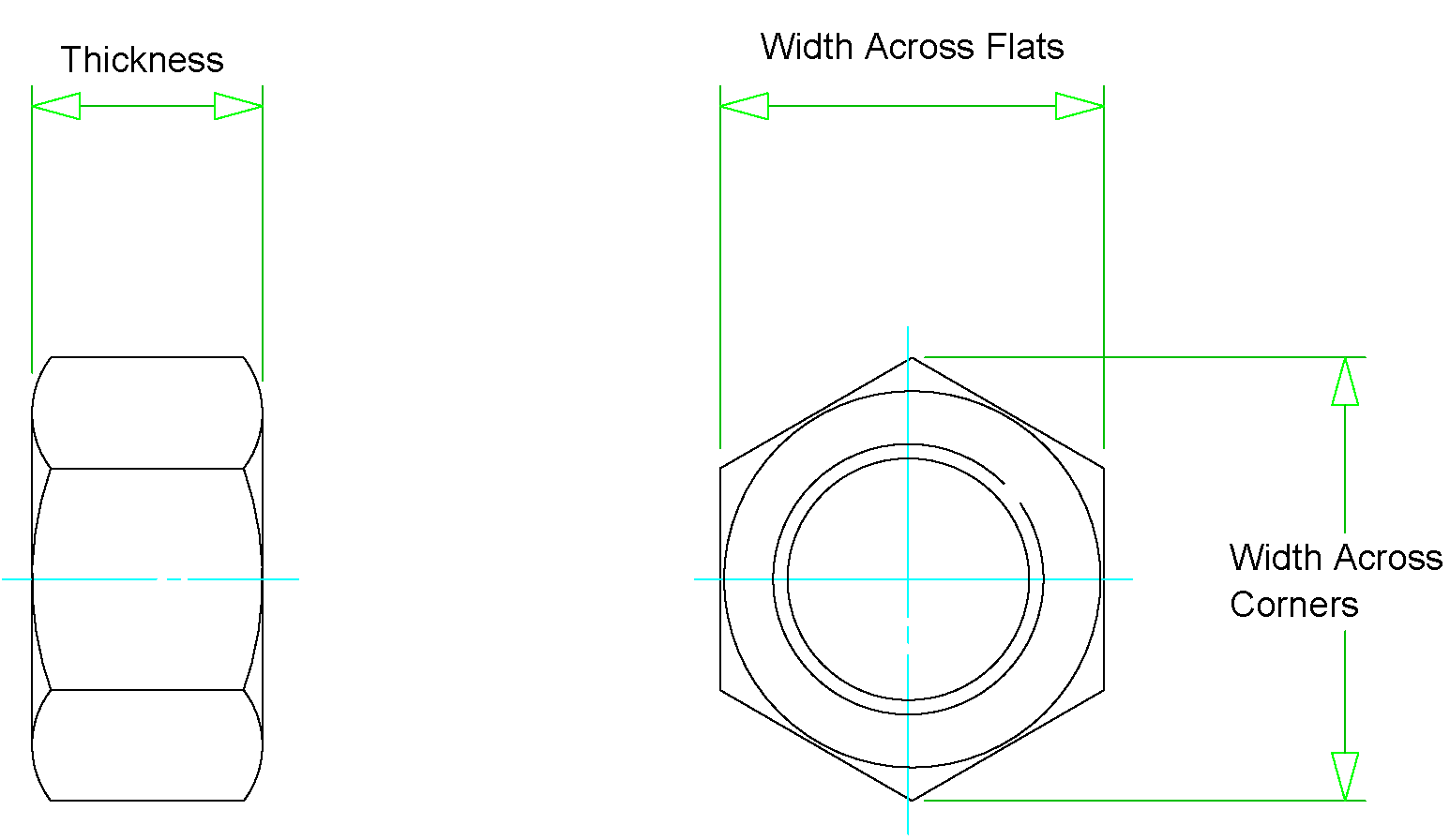Class 12 - Holiday Home work for the week ( 8th to 12th June 2020)
Dear Students,
The following is the holiday home work for the week 8th to 12th June 2020
1. Hexagonal Nut
The most commonly used nut is a the hexagonal nut. It resembles a hexagonal slab (prism) in which a threaded hole is provided. On one end, that is the top end of the nut, the corners are rubbed off so that they are not sharp. Some material of the nut at the corners is removed by a machining process. this process of removing the sharpness at the corners is called as 'chamfering'. The angle of chamfering is usually 30 degrees with the top surface. Refer to Fig 1 below.
Fig 1 above shows chamfered corners of the nut. Also seen in the picture is the chamfer circle beyond which chamfering is done.
Why is chamfering done?
Chamfering is done to remove sharp corners of the nut so that the operator does not hurt himself while handling the nuts.
1. Width across CORNERS
Fig 2 below shows the width across CORNERS. If 'd' is the side of the hexagon and also the nominal diameter of the thread, then the width across corners of '2d'.
2. Width across FLATS
Fig 2 below shows the width across FLATS. If 'd' is the side of the hexagon and also the nominal diameter of the thread, then the width across FLATS of '1.732 d'.
Fig 2 below, shows the thickness of a nut. When the axis of the nut is perpendicular to the HP then the thickness is also referred to as its height. The thickness or the height of a nut is taken as 'd' (The nominal diameter of the Nut nd also the side of the hexagon).

Fig 2: Width across FLATS and CORNERS for a Hexagonal Nut
Fig 3: All the three views of a hexagonal nut
Fig 4: All the three views of a hexagonal nut
2. Square Nut
A Square nut is also a commonly used nut. It resembles a square slab (prism) in which a threaded hole is provided. Refer Fig 1 below.
A square nut is aslo chanfered just like a hexagonal nut. On one end, that is the top end of the nut, the corners are rubbed off so that they are not sharp. Some material of the nut at the corners is removed by a machining process. this process of removing the sharpness at the corners is called as 'chamfering'. The angle of chamfering is usually 30 degrees with the top surface.
Fig 1: A Square Nut
The orthographic views of a square nut are made keeping the axis of the nut perpendicular to the HP and two of its faces visble in the Front View as shown in Fig 2, below.
Fig 2: Orthograpnic Views of a Square Nut
Exercise - Square Nut
Q 1. Draw to scale 1:1, the Top View, Front View and LH Side View of a hexagonal nut of nominal diameter 30 mm, i.e. M30, keeping the axis perpendicular to the HP and three faces visible in the front view.
Q 2. Draw to scale 1:1, the Front View and Top View of a Square Nut keeping its axis vertical and the diagonal of the square face (in the top view) parallel to the VP. (This is also called as Square nut across corners).
Q 3. Draw to scale 1:1, the Front View and Top View of a Square Nut keeping its axis vertical and two edges of the square face (in the top view) parallel to the VP.
Comments
Post a Comment